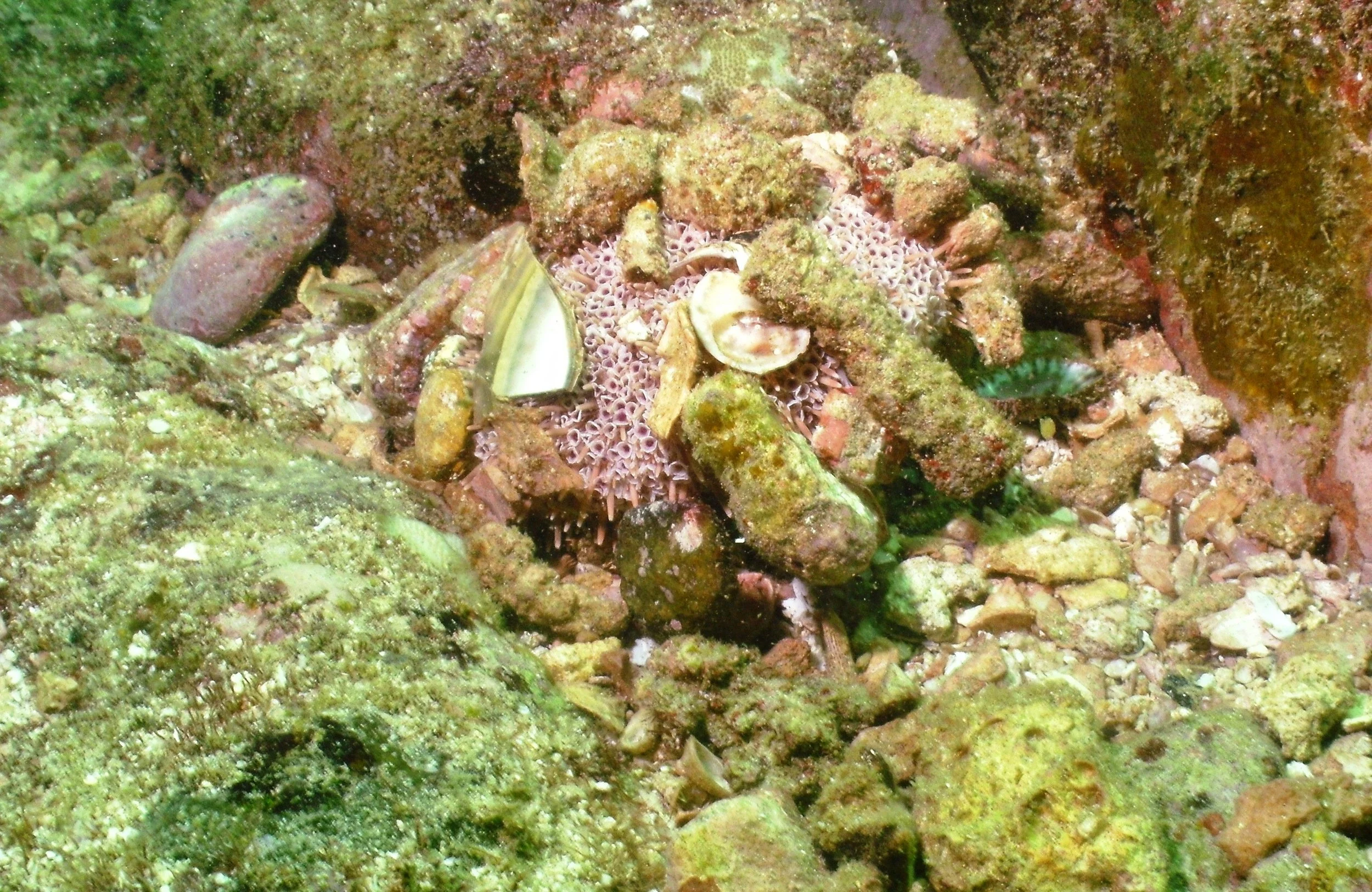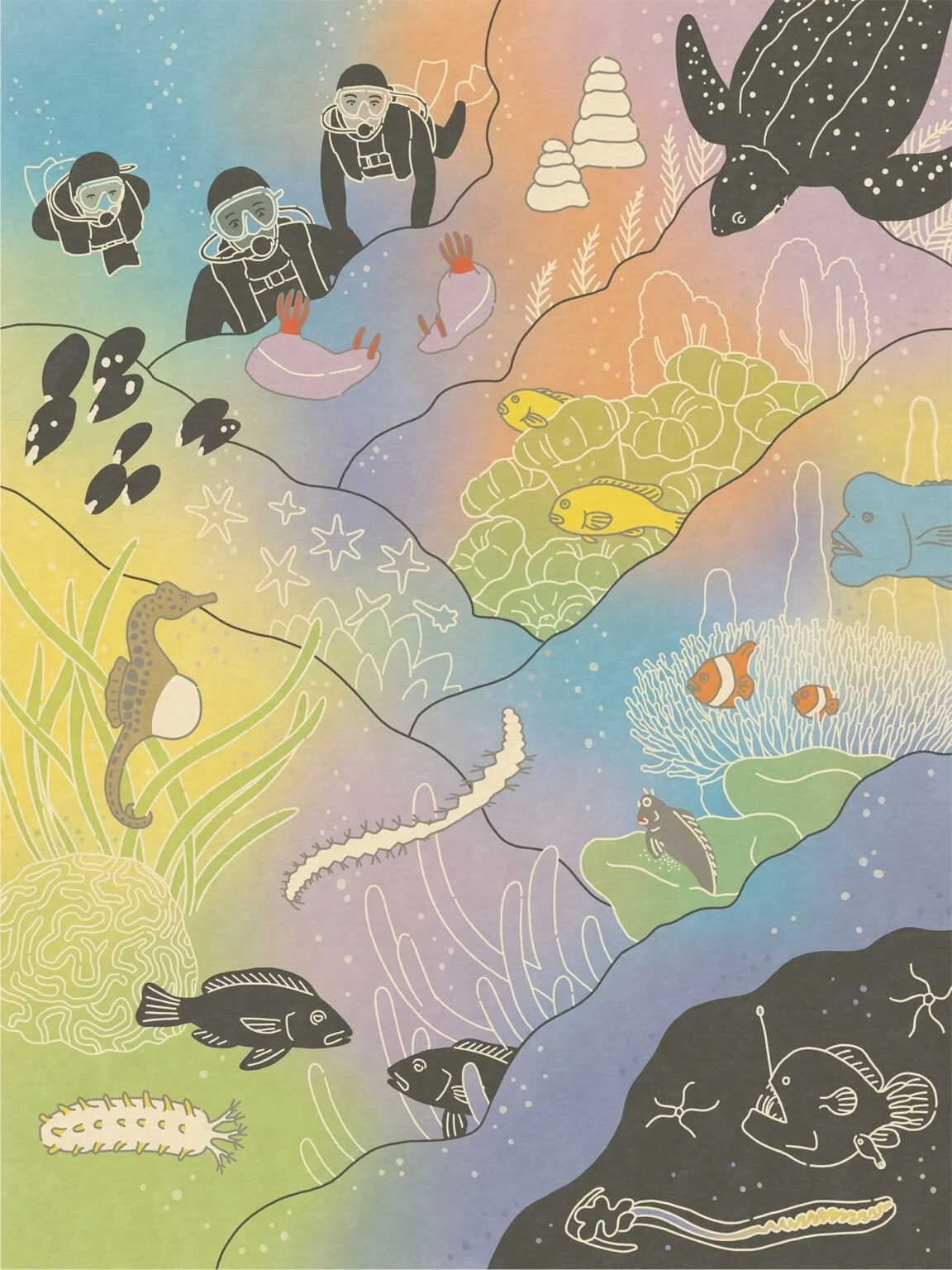Not all animal species operate on a system of only males and females! Trioecy, when hermaphrodites coexist with females and males in a population, is an understudied reproductive strategy being brought into the spotlight with pink sea urchins in the Mexican Pacific. Valentina Islas-Villanueva and Francisco Benítez-Villalobos brought their research to our attention because they found that trioecy is maintained as a time-stable mating system, not as a one-time coincidence or a disorder. Their work adds to a growing body of evidence about the naturally occurring diversity of sex in living things.
Inclusive Biology Evolves With Students - Article in Science For The People
River Suh wrote this article in Science for the People Volume 26, no. 1, Gender: Beyond Binaries in 2003.
Narwhal Rainbow Alliance
The Narwhal Rainbow Alliance is a not-for-profit committed to protecting biodiversity and promoting diversity. The Alliance uses queer narratives as their foundation.
The Narwhal Rainbow Alliance aims to support biodiversity protection through empowering local communities and projects.
Differences in Sex Determination Investigation
Alex Maes created this investigation which includes a variety of videos and infographics also featured on this website. Two versions are available, one more scaffolded than the other.
Alex writes:
I've made a lesson like this too using lots of resources from genderinclusivebiology.com, as well, as some of my own. I have an individual, less scaffolded version I do with my IB juniors, and a more scaffolded version with whole class, individual, and small group components I did with my freshman! Feel free to use!
Edit (6/8/23): Thank you to Wayne for noting the lesson materials include diagrams including humans in a chart entitled hermaphrodites. It is important to discuss with students how language changes when describing human versus non-human species because of how “hermaphrodite” was historically used as a pejorative to stigmatize people. Wayne provided the link embedded in the disclaimer most frequently seen on related GIB posts: Editor’s note: The term "hermaphrodite" is appropriate for referring to non-human animals with sex characteristics that do not fit typical binary notions of male or female bodies. For humans, “intersex” is the appropriate term—learn more here! (-RXS)
Lesson Plan: The Guardian Frogs of Borneo
In this lesson for grades 5-8, students explore diversity in mating and parental behaviors across species with a clearly defined concept of sex as opposed to gender.
Evolution's Rainbow: A queer species database of 200+ organisms
Need a research Topic for queerness in living organisms?
Check out the 🔎SPECIES DATABASE from Stanford biologist Joan Roughgarden’s book, EVOLUTION’S RAINBOW (University of California Press). Click the link above, or check out the embedded document below for 200+ species from the asexual, gay, lesbian, transgender, intersex, and hermaphrodite spectra. Includes behavior, neurobiology, and chromosomal phenomena.
Editor’s note: The term "hermaphrodite" is appropriate for referring to non-human animals with sex characteristics that do not fit typical binary notions of male or female bodies. For humans, “intersex” is the appropriate term—learn more here!











